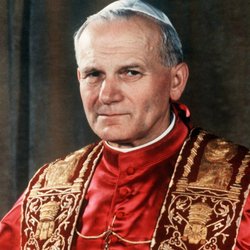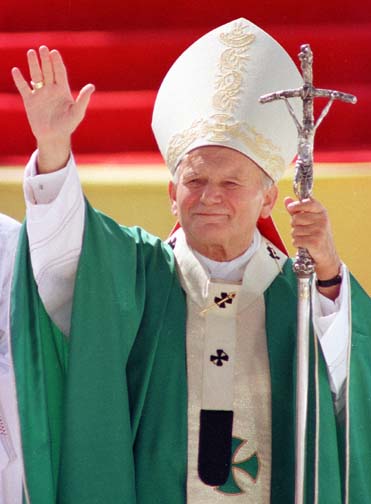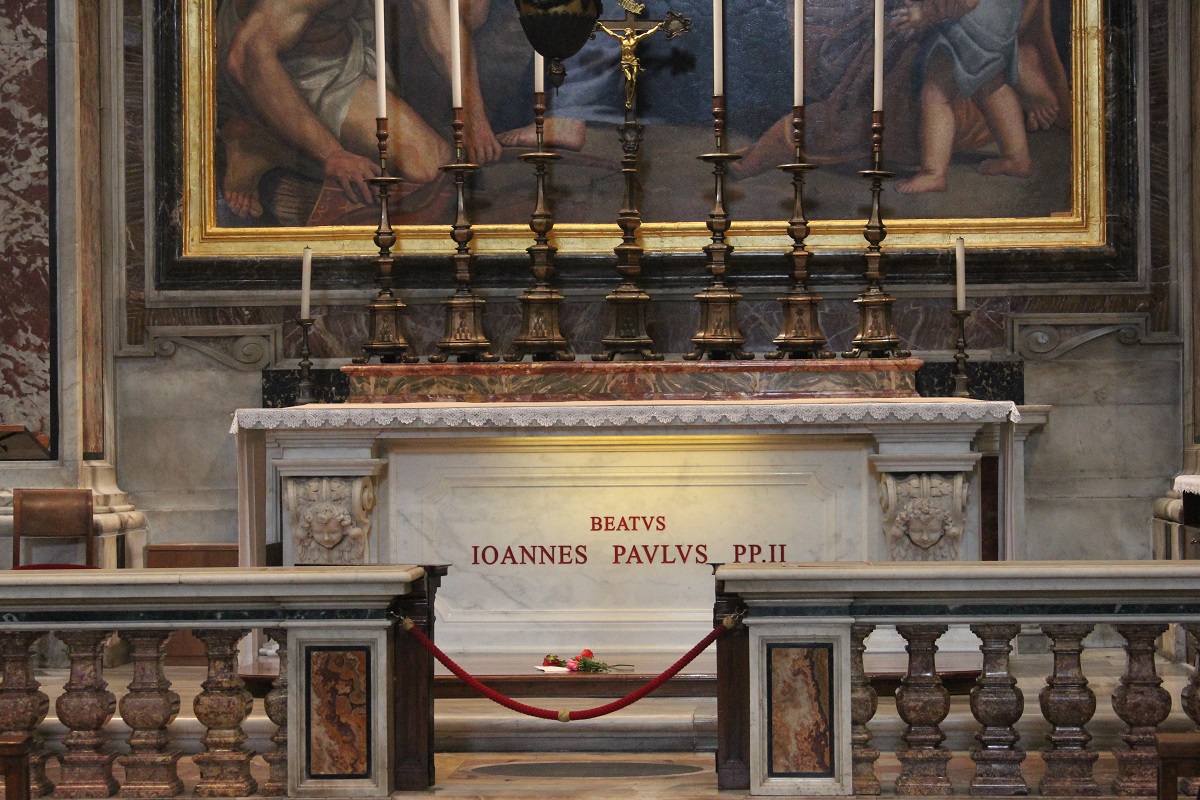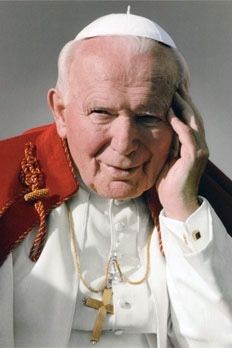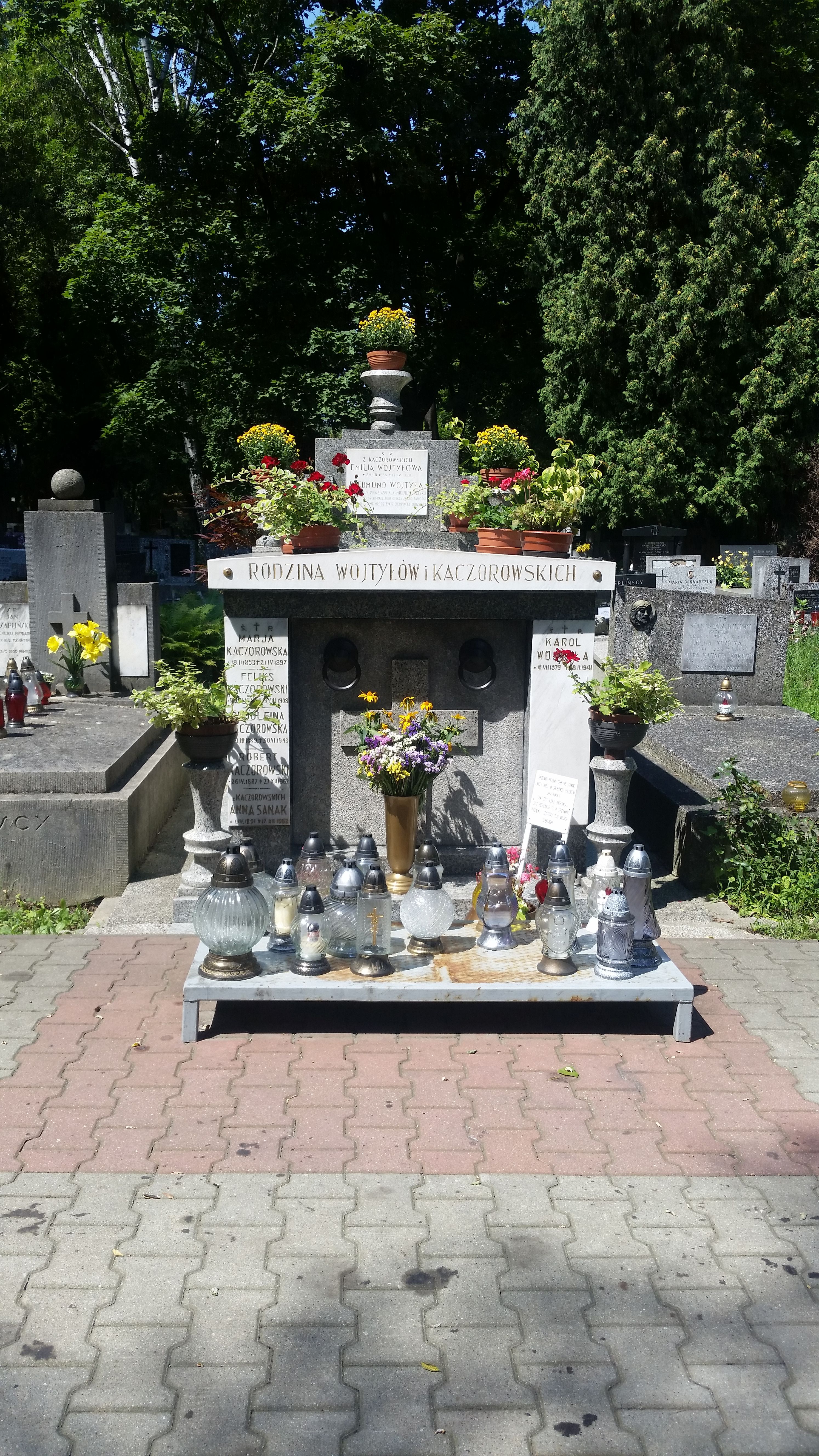Born Karol Joseph Wojtyla in Wadowice, Poland, to an administrative officer in the Polish Army and a former schoolteacher, he rose to become the most visible and most-traveled Pope. As a youth, he enjoyed sports and later developed a love of the theater, planning to become a professional actor.
During the Nazi occupation of Poland, he clandestinely pursued both his studies and his acting while working as a stone cutter to support himself and to hold the work permit he needed to avoid deportation or imprisonment. He was also active in the UNIA, a Christian democratic underground organization. B'nai B'rith and other authorities have testified that he helped Jews find refuge from the Nazis.
While convalescing from an accident, he decided to pursue a religious vocation, and, by 1942, was studying for the priesthood. He was ordained a priest on November 1, 1946. On July 4, 1958, Father Wojtyla was named Auxiliary Bishop of Krakow, and, four years later, assumed leadership of the diocese with the title of Vicar Capitular. He was named Archbishop of Krakow on January 13, 1964. He was a visible leader, often taking a public stand against communism and government officials.
In 1967, Pope Paul VI elevated him to Cardinal. By this time, several of his poems and writings had been published, including "Easter Vigils and Other Poems." He was created Cardinal on June 26, 1967.
On October 16, 1978, at age 58, he was elected to succeed Pope John Paul I. He was the first Polish Pope and also the first non-Italian Pope since Pope Adrian VI in 1522.
His more than 100 trips abroad attracted enormous crowds (some of the largest ever assembled). With these trips, John Paul covered a distance far greater than that traveled by all other popes combined. They have been regarded as an outward sign of his efforts at global bridge-building between nations and between religions that was central to his pontificate.
On May 13, 1981, the feast day of Our Lady of Fatima, Pope John Paul II suffered severe wounds when he was shot and struck twice as he entered St. Peter's Square to address a general audience. He was hospitalized for two and a half months, but fully recovered from his wounds. He credited Our Lady, to whom he prayed, with saving him. On May 13, 1982, the first anniversary of the assassination attempt, he traveled to Fatima and placed one of the bullets in Our Lady's crown. Two days after Christmas in 1983, he went to the prison and met with his would-be assassin, Mehmet Ali Agca.
Pope John Paul II enjoyed hiking, skiing, backpacking, and kayaking. Young people had a special place in his heart. In 1985, he called young people to join him for the first annual World Youth Day celebration in Rome. Since that time, he continued to speak with young people, encouraging them to live the Gospels and reach out in a spirit of evangelization to their peers.
On July 27, 2000, he was awarded the Congressional Gold Medal by the Congress of the United States. He was beatified on May 1, 2011, the feast of Divine Mercy to which he was devoted, by Pope Benedict XVI, and was canonized on April 27, 2014, also on Divine Mercy Sunday, at St. Peter's Square in Vatican City by Pope Francis.
Born Karol Joseph Wojtyla in Wadowice, Poland, to an administrative officer in the Polish Army and a former schoolteacher, he rose to become the most visible and most-traveled Pope. As a youth, he enjoyed sports and later developed a love of the theater, planning to become a professional actor.
During the Nazi occupation of Poland, he clandestinely pursued both his studies and his acting while working as a stone cutter to support himself and to hold the work permit he needed to avoid deportation or imprisonment. He was also active in the UNIA, a Christian democratic underground organization. B'nai B'rith and other authorities have testified that he helped Jews find refuge from the Nazis.
While convalescing from an accident, he decided to pursue a religious vocation, and, by 1942, was studying for the priesthood. He was ordained a priest on November 1, 1946. On July 4, 1958, Father Wojtyla was named Auxiliary Bishop of Krakow, and, four years later, assumed leadership of the diocese with the title of Vicar Capitular. He was named Archbishop of Krakow on January 13, 1964. He was a visible leader, often taking a public stand against communism and government officials.
In 1967, Pope Paul VI elevated him to Cardinal. By this time, several of his poems and writings had been published, including "Easter Vigils and Other Poems." He was created Cardinal on June 26, 1967.
On October 16, 1978, at age 58, he was elected to succeed Pope John Paul I. He was the first Polish Pope and also the first non-Italian Pope since Pope Adrian VI in 1522.
His more than 100 trips abroad attracted enormous crowds (some of the largest ever assembled). With these trips, John Paul covered a distance far greater than that traveled by all other popes combined. They have been regarded as an outward sign of his efforts at global bridge-building between nations and between religions that was central to his pontificate.
On May 13, 1981, the feast day of Our Lady of Fatima, Pope John Paul II suffered severe wounds when he was shot and struck twice as he entered St. Peter's Square to address a general audience. He was hospitalized for two and a half months, but fully recovered from his wounds. He credited Our Lady, to whom he prayed, with saving him. On May 13, 1982, the first anniversary of the assassination attempt, he traveled to Fatima and placed one of the bullets in Our Lady's crown. Two days after Christmas in 1983, he went to the prison and met with his would-be assassin, Mehmet Ali Agca.
Pope John Paul II enjoyed hiking, skiing, backpacking, and kayaking. Young people had a special place in his heart. In 1985, he called young people to join him for the first annual World Youth Day celebration in Rome. Since that time, he continued to speak with young people, encouraging them to live the Gospels and reach out in a spirit of evangelization to their peers.
On July 27, 2000, he was awarded the Congressional Gold Medal by the Congress of the United States. He was beatified on May 1, 2011, the feast of Divine Mercy to which he was devoted, by Pope Benedict XVI, and was canonized on April 27, 2014, also on Divine Mercy Sunday, at St. Peter's Square in Vatican City by Pope Francis.
Bio by: Fred Beisser
Family Members
Advertisement
See more Paul II memorials in:
Explore more
Sponsored by Ancestry
Advertisement
